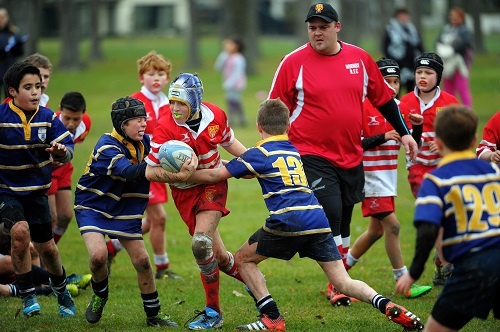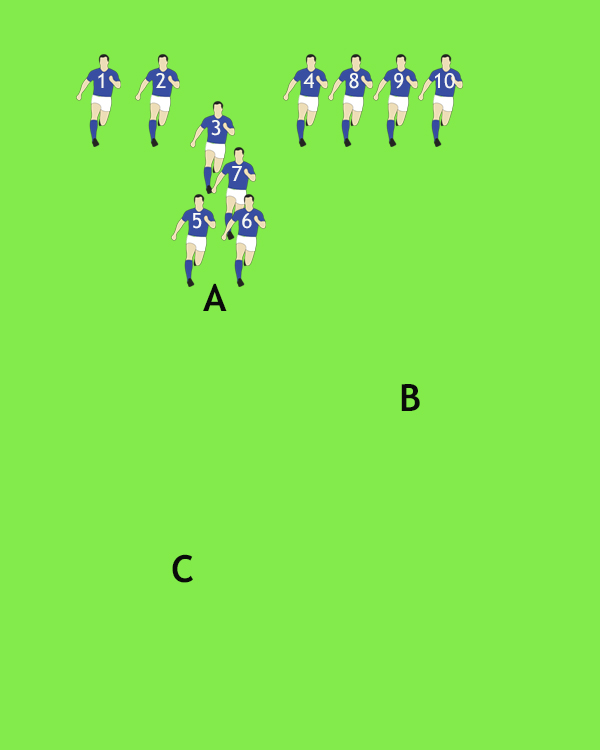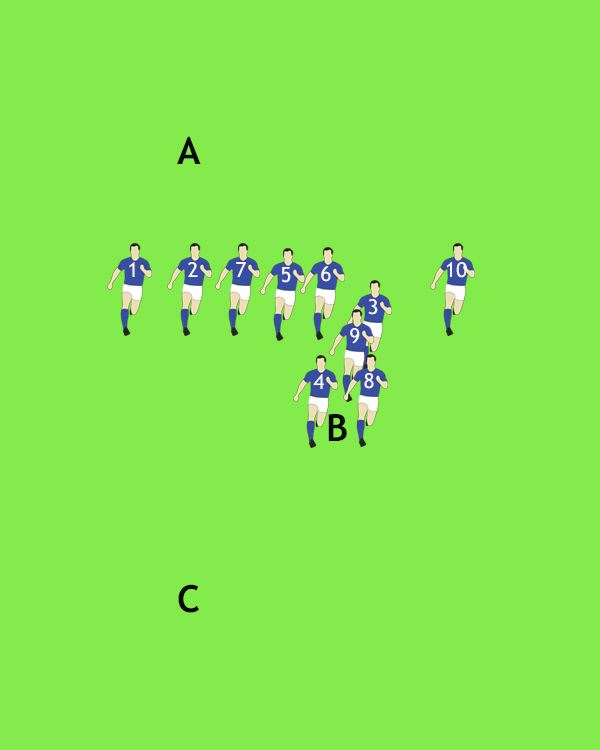- Rugby Toolbox
- Resources & Education
- Learn more
- Articles
- Snook on Coaching
- Under 8/10 – Using Space
- Ruck & Run Drill
- Playing Philosophy – Ruck & Run Coaching Components
- Playing Philosophy – Spread the Forwards
- Playing Philosophy – A forward behind the ruck
- Playing Philosophy – Ruck & Run
- Playing Philosophy – An idea!
- The Breakdown
- Building Positivity [3]
- Building Positivity [2]
- Building Positivity
- Fitness and Game Related Activities
- Getting the Head Working
- Missiles are Dangerous
- Use of Video
- Winger Attacking Outside First-Five
- Player Profiling
- Selection
- Fitness Away from the Team Session
- Playing Philosophy (Pre season Prep)
- Coaching the Coaches
- The Rugby Coordinator and Pre-Season Preparation
- Why Not Use Tap Penalties More Often?
- Why Kick the Ball Down the Middle of the Field?
- Defending the 5 Metre Lineout Drive
- Scoring from the 5 Metre Lineout
- What are the Kicking Team Aiming to Achieve from Halfway Restart
- Should We Practice Scoring Tries?
- Team Culture
- Looking After Your Players
- Coach Survival Tips
- Under 11/13 – Backline Defence
- Under 11/13 – Ruck Defence
- Under 11/13 – Back Attack
- Under 13 – The Counter Attack
- Under 11/13 – The Maul
- Under 11/13 – Lineouts
- Under 11/13 – Decision Making
- Under 11/13 – Support Play
- Under 11/13 – Dive Pass and More
- Under 11/13 – Drop & Grubber Kick /Highball Catch
- Under 11/13 – Front on Tackling
- Under 11/13 – Contact – Getting Up – The Ruck
- Under 11/13 – The Coaching Session
- Under 8/10 – Using Space
- Under 8/10 – Kicking
- Under 8/10 – Contact and Picking Up the Ball
- U8/U10 Draw & Pass and Sidestep
- Under 8/10 – The Tackle
- Under 8/10 – The Coaching Session
- Under 7 – Test Your Coaching – Support Play
- Tap Pass and Swerve U7
- Ball Familiarisation; Passing & Receiving
- Activities for the Non-Contact Tackle
- Under 7 – The Coaching Session
- Coaching Teenagers – After the Ruck
- Coaching Teenagers – The Practice Session
- Coaching Teenagers – Best Practice
- Coaching Kids – Best Practice
- Plays from a Tap Penalty
- Running Plays from a 5 Man Lineout
- Driving Plays from a 5 Man Lineout
- Strike Plays at the End of the Lineout
- Back Strike Plays at the Lineout
- Wide Strike at the Scrum (2)
- Wide Strike at the Scrum
- Midfield Attack at the Scrum
- No 8 Plays at the Scrum (2)
- No 8 Plays at the Scrum
- The Cut Out Pass
- Skills to Penetrate (2)
- Skills to Penetrate
- Movements to Penetrate
- Patterns to Penetrate
- Contact and Continuity
- Keeping the Ball Alive Out Wide
- Pre Season Support Activities
- Checklist
- Understanding the game
- The Playing Philosophy
- The Lineout
- Overview
- Team Profile
- Start Now!
- Backrow
- Nine and Ten
- Rugby-related Fitness Activities
- The Psychological Edge
- Open Field Play
- Key Performance Indicators
- Improving Team Performance
- Backline Attack Concepts
- Tactics at Phase Play
- Playing Philosophy
- The ‘Stop Focus’
- Kick Attack
- Clearing the 22
- Wide Attack at Phase
- Player Focus
- Scrum Preparation
- Lineout Preparation
- Back Attack Preparation
- Sevens Preparation
- Sevens Kick Offs
- Sevens Scrum and Lineout
- Sevens Attack Patterns
- Sevens Defence
- 7's Selection and Game Planning
- Coaching and Leadership
- How the Game Evolves
- Changing Within the Game
- Learning from the Television.
- Using Tap Penalties Wisely
- Defence Drills
- Defence Drills for Tight Five
- Team Defence and TUB’ing
- Establishing Patterns from the Ruck
- Structured Phase Play
- Structuring Phase Play on the Run
- Coaching Roles
- Structuring a Close in Tackling/Defensive Session
- Coaching in Threes
- Attacking Back Play
- Kick Off Chase
- Wrap Around Back Plays
- Lineout Plans
- Looking and Learning
- Motivating Your Players
- Scrum Attack
- Refocusing the Team
- Monitoring the Progress
- Learning the Game
- Playing to the Laws
- Small is OK
- Decisions After the Tackle
- Improving Your Coaching
- Food for Thought
- More Food for Thought
- Passing & Catching
- How Ireland Nearly Beat the All Blacks
- The Progressive Coach
- Try Something New
- Encouraging Excitement
- The Mental Approach
- Where to Start
- Being the Best You Can Be
- Off the Ball Decisions
- Lineouts Difficult to Master
- Decisions on the Run
- Rucking and Rolling
- A Successful Approach
- Gaining Clarity
- Manipulation vs Physicality
- Beating the Drift
- To Ruck or Not to Ruck
- Stopping the Lineout Drive
- Fine Tuning the Planning
- It's a Running Game
- RugbySmart 2015
- Using the Shoulders
- Loosehead Prop / Tighthead Prop
- Position Specific – Hooker
- Position Specific – Lock
- Position Specific – Blindside Flanker
- Position Specific – Openside Flanker
- Position Specific – No 8
- Position Specific – Halfback
- Position Specific – First Five Eighth
- Position Specific – Second Five Eighth
- Position Specific – Centre Three-quarter
- Position Specific – Wing
- Position Specific – Fullback
Under 8/10 – Using Space

Test Your Coaching – Using Space
One of the coach’s jobs is to teach kids the aspects of the game so as a challenge at this level you could introduce the concept of using space.
Most teams will still bunch up and follow the ball so the challenge is to get the players to anticipate what might happen next and take up a position on the field that will help the team continuity.
The Concept
Talk to your team about ‘using space’. You might get them to look at examples on the television and explain what has happened and why. Make sure they know why using space is important in rugby. Get them to tell you what situations in their own game can be improved and how they will do this. Make sure they know what you are talking about when you talk about the ‘shape’ of the game. Not only positions at set play but how they hold their shape in phase play so that the ball can be passed to players in better positions who are not under so much pressure.
At this level many players who get in to good positions might not get the ball so you need to work on this aspect. If you can achieve this your team will be hard to beat and have a lot more fun.
ACTIVITIES
1- Creating the Understanding
Set up a play from a set piece and get the team to run through a phase where they have a play to carry out. At the tackle point ‘stop’ everyone where they are.
Ask questions: who needs to be near the ball? / what should they be doing? / where would be a good place to attack now? / what would be good positions on the field for each player to achieve this?
Carry on with the play and stop one more time. Carry out the same questioning and find out what the team are thinking and whether they are beginning to understand what is required and why.
Do the same two or three times starting with different plays.
2- Checking the Understanding
During team runs randomly stop everyone where they are and discuss what could happen next. Where should everyone be positioned? What role will they have?
3- Using Bags as Tackle Points
Using about half the size of the normal playing field for the age group place three tackle bags (any bags/shields) at three random spots about 15 metres apart. Name bags ‘A, B & C’.
Players start at a determined point and the coach calls “A, B or C’.
|
Call "A" - players run to best positions
Call "B" - players run to the best position
Coach can call another letter at any time |
On the call the players set up an attack at that point by running in to the appropriate positions as quickly as possible.
Discuss where each player might head to. Closest two players might head towards the tackle area and secure the ball. One more player might follow them in to provide a clean out, drive or to secure the ball. The next player can act as the halfback.
As the coach is hoping to create an awareness of space it is important that the players understand why they are spread across the field and that passing is an important aspect.
The coach and the team could make up some rules: Closest three at the tackle-ruck / next player in as halfback – he can pass or run / players spread across the field ready to pass and catch until a player is in space. Then they take off!
This sequence can be added to with use of plays designed by the team, use of both sides of the field, or even a kick across to a wide player.
If the coach has a big number of players then a defensive team can oppose the attacking team. They will run back to each bag as the letter is called.
Holding tackles might be sufficient at training.
The defensive team also must understand how to keep their ‘shape’.
How many go to the tackle point? Where do, the next tacklers go? (Beside the ruck) / Rest of tacklers spread across marking up the attack players. They need to look and decide where the best place to defend will be.
Good luck.